Amy Sue Nathan's Blog: Women's Fiction Writers, page 5
April 4, 2019
Day 4 – 30 Days of Writing Advice – Read to Me
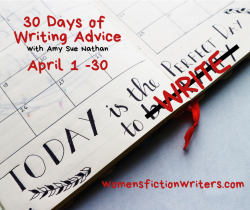
DAY 4
This month of daily writing advice will include tidbits, tips, and sometimes tricks. This isn’t a replacement for editing or book coaching, it’s meant as a jumping off point for exploration and thought! I hope it helps! ~Amy
HEARING YOUR OWN WORDS
I bet you’ve heard the advice to read your dialogue aloud to help hear if it’s realistic. Or to read all your words aloud to catch double words, awkward phrasing, cadence, pacing — it’s really a great general way to review your work at any stage of the writing process.
I’m going to suggest three ways to hear your own work that really work for me. Sometimes I follow along, and sometimes I close my eyes and just listen. I do this for one paragraph and I do it for a chapter. I haven’t listened to more than that because number 1 and 2 are computer-generated voices and I’m too lazy to read more than that for option 3.
NATURAL READER has free software and a free app. There’s a limit on how many words it will read, but it’s easy to use and you do get a choice of computer voices. I couldn’t use this for long because it couldn’t pronounce BOOP, which is the name of one of my main characters! It spelled it out each time which really took a toll on me. But it might work for you!
TEXT TO SPEECH on my MacBook Air. It’s true, I didn’t know this existed but it does. I enabled it (or maybe that’s the default, I forget), choose a voice and a speed, and then the hardest part was remembering the shortcut key strokes. For me, it’s ALT-ESC. All I do is highlight what I want read, hit ALT-ESC, and voila, my laptop reads to me. I just use the shortcut again if I want to stop it. Note, this method can’t pronounce Abe. It says Ah-bay, which is better then hearing B-O-O-P a thousand times.
Even though most of us don’t like to listen to recordings of our own voices, that really works too! I’ve recorded myself on my phone and then played it back. Is it slightly mortifying? Sure, but there’s no one around but me. This is my least favorite option, but at least I can pronounce all the names in my book.
Any other suggestions?
See you tomorrow!
Amy xo
FOR INFO ON BOOK COACHING OR EDITING, CLICK HERE!
April 3, 2019
Day 3 – 30 Days of Writing Advice – Dialogue Tags

DAY 3
This month of daily writing advice will include tidbits, tips, and sometimes tricks. This isn’t a replacement for editing or book coaching, it’s meant as a jumping off point for exploration and thought! I hope it helps! ~Amy
HE SAID, SHE SAID
You may not want to hear this, but 99% of the time, said and asked are the only dialogue tags you need.
Why oh why?
The point of dialogue tags are to indicated who’s talking. That’s it. Not a fancy purpose, a utilitarian one.
Words like remarked, continued, added, questioned, interrupted? They’re redundant. Your dialogue just by being your dialogue shows this, right? If someone interrupts, we know that.
So LET YOUR DIALOGUE DO THE WORK.
Use dialogue tags only to make it clear who’s speaking. Leave off the flowery tags.
Do words like whispered or yelled work sometimes? Sure, there might be no other way to indicate these things.
OR IS THERE?
See you tomorrow!
Amy xo
FOR INFO ON BOOK COACHING OR EDITING, CLICK HERE!
April 2, 2019
Day 2 – 30 Days of Writing Advice – How To Format Dialogue

DAY 2
This month of daily writing advice will include tidbits, tips, and sometimes tricks. This isn’t a replacement for editing or book coaching, it’s meant as a jumping off point for exploration and thought! I hope it helps! ~Amy
Everything You Ever Wanted To Know About Dialogue Formatting But Were Afraid To Ask
Correct dialogue formatting in fiction, folks. It’s a thing.
If you format your dialogue correctly you will immediately improve the reading experience, even in your first draft. And why not do it right, right?
As a book coach and freelance editor I see it all. Here are the corrections for the three most common mistakes I see. There are exceptions, but for the most part these are the rules.
***
Punctuation stays INSIDE quotation marks.
“See what I mean?” “See what I mean”?
***
A pronoun in dialogue tag is NOT capitalized. (of course proper names are capitalized)
“See what I mean?” she asked. “See what I mean?” She asked.
***
Hit return, then type your dialogue. Dialogue, most times, looks like a list. Each speaker gets attention by being on a new line. Everyone likes their own space.
“I know I like my own space,” she said.
“Me too,” he said.
Dialogue, most times, looks like a list. Each speaker gets attention by being on a new line. Everyone likes their own space. “I know I like my own space,” she said. “Me too,” he said.
***
These tips are a great head start. Your manuscript will look better and read better.
Here’s more:
Dialogue tags (he said/she said) stay outside the double quotation marks.
“I created this blog in 2011,” Amy said. “I created this blog in 2011, Amy said.”
Indent the first line of dialogue.
If an action follow dialogue, it is a sentence, not a dialogue tag. End your dialogue with appropriate punctuation.
“I didn’t realize how long this post would take to write.” She rolled her eyes.
“I didn’t realize how long this post would take to write,” she rolled her eyes.
If an action relates directly to HOW the dialogue was spoken, a comma is used and it’s a dialogue tag (more on writing dialogue tags tomorrow).
“I hope this post helps writers,” she mumbled.
If the same character has a lot to say and needs a new paragraph, place opening quotation marks at the beginning of each paragraph. However, closing quotation marks are placed only at the end of the final paragraph. Please take note. This is correct, but it doesn’t mean your characters should ramble on. I might suggest rereading and seeing if you can’t break it up a bit. Reading a Chatty Cathy can be cumbersome.
I may have missed something, but hey, it’s a start.
Some other parts of writing dialogue are stylistic, and I’ve read that some writers have stopped using quotation marks altogether.
“Don’t get me started,” she screamed.
See you tomorrow for more on writing dialogue.
Amy xo
Want me as your writing coach?
April 1, 2019
Day 1 – 30 Days of Writing Advice – Choosing a Name for your Main Character

DAY 1
This month of daily writing advice will include tidbits, tips, and sometimes tricks. This isn’t a replacement for editing or book coaching, it’s meant as a jumping off point for exploration and thought! I hope it helps! ~Amy
CHOOSING A NAME FOR YOUR MAIN CHARACTER: WHAT’S WITH ALL THE CLAIRES?
I read a lot and do quite a bit of book coaching and editing. My question for 2019 is now WHAT’S WITH ALL THE CLAIRES? I think I now have four writing clients with a Claire protagonist.
One of the best parts of writing fiction, to me, is naming my characters. I have two kids in real life — and now I get to name other people? Woo hoo!
While you don’t know when your book will hit bookshelves (or maybe you do) why not find a name that isn’t in EVERY SINGLE OTHER MANUSCRIPT OUT THERE? If Claire is your number one name, consider that it may be others’ favorite too. Wouldn’t you rather be unique? I know I would!
Instead of just searching a name book or list, look up something that tugs at you. Flower names, biblical names, one-syllable C names (like Claire, but not).
I look up names with double letters. (Ever notice my books have Izzy, Teddi, Betty, and Boop?)
I especially like to use the Social Security Administration list of popular names per year and/or state. But don’t stick to that — I will sometimes look before a character would have been born, because maybe their parents had a holdover fave!
It’s your book — write it with a Claire if you want — maybe consider a special nickname for her that her family uses. (Claire-bear seems cliche) One word of caution — funky spelling can be distracting — so Klaire might not be the best workaround.
Let’s help each other! How do you name your characters, and why? Have a great resource? Please share!
SEE YOU TOMORROW!
Amy xo
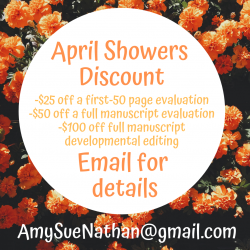
March 30, 2019
You’re reading a Best Website for Writers!
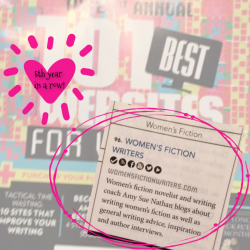
For the 5th year in row, WFW has been named a Best Website for Writers! You know what that means, right? YOU HAVE GREAT TASTE IN WRITING SITES!
Monday starts 30 Days of Writing Advice here on WFW! GOOD TIMING!
Amy xo
March 25, 2019
A Month of Writing Advice. No Foolin’!
Guess what?
After a short hiatus, I’m under the crunch again, getting ready to send my manuscript to my editor on April 1 — and then I’ll have a short break before I head into edits.
It’s fun to deep dive with some direction from my agent. I’m going to focus on the present day chapters and add more of a sense of place.
I’ve shared with you the South Haven of the past, so here’s a bit of South Haven of the present! But don’t click away…there’s an announcement about April after the photos!
xo
Amy
Click to view slideshow.
Starting April 1 please join me for 30 DAYS OF WRITING ADVICE right here on WFW! Every day I will share a tip or tidbit that is helpful to me and my writing clients, so you can see if it’s helpful for you too!
If you have a question, ask it in the comments, or email me at amysuenathan at gmail dot com and I’ll answer it on the page if I can!

March 21, 2019
Not. Good. News. (with a bright side)
Not. Good. News.
My second largest editing and teaching client has filed for bankruptcy. What does that mean for me? I wasn’t paid for two months of work and have stepped away from future obligations for this company. Wouldn’t you? I mean, I love what I do but a girl needs the lights on, wifi, lipstick. Oh, right, and dog food.
The bright side?
Discounts for you on my private editing services! (below)
Why?
I have time and space to fill in my work calendar and some income to “make up for.” A discount brings in new writers when I need them most.
And that’s where you come in. Reach out to me, share with your friends, spread the word on social media. I need your help getting the word out. In exchange, I promise to treat your words — or anyone’s — with the same if not greater care than I give my own!!
Thanks, lovelies!
Amy xo
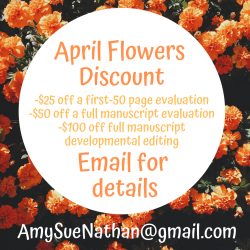
March 18, 2019
The Story Behind the Story #3
Hi there!
I see my stories in my head while I write. (Do you? But I do not see faces, go figure.) It only goes to reason that my novels would be inspired by images, right? Actually, The Last Bathing Beauty is the first of my four books to be inspired by a photograph and an article. I’d learned about South Haven and started digging around. I not only found out about the Historical Society of South Haven, a place (and person) I’d get to know well, but when I saw this article and photo, I knew the story I needed to write.
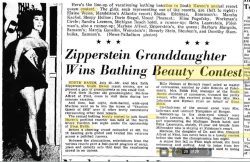
I wondered who she was — and what about her made her simply the Zipperstein granddaughter? What was that summer like for her? What did she do after that? I didn’t dig or delve or research — I IMAGINED. And Betty was born! (When I enlarge the article it’s all blurry, and love ya, but not retyping it. You’ll have to wait and read MY VERSION in the novel. THAT was fun.)
Here’s a look at the contestants. Times have changed!
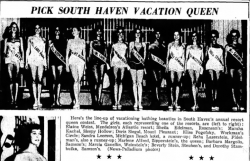
Here’s a close up of Miss South Haven and another girl, and as you can see, their sashes were embroidered with the name of the resort they represented. I guess it was like having a sponsor, but I do imagine that the win was as much for the resort as the young lady. I know that was the case for Betty!
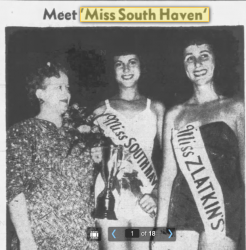
As you’ll read in the novel, Betty causes quite a stir at the contest! No photos from that day are quite this serene!
It was fun to have this kind of inspiration, and that of an entire era in South Haven as my inspiration. It was the first time I was staying true to a time period and place I had not lived in. It reminded me how much I love the research process, and how easy it is to spend hours poring over books and articles and photos. It’s now my preferred writing companion — and I already have a magazine from 1962 that has sparked my idea for book #5.
I guess I could’ve gone anywhere with an idea taken from these pictures and words. I hope you’ll enjoy the path I followed to write this book!
Amy xo
PS In April I’m posting one bit of writing advice every day for 30 days, then in May I’ll be back with weekly updates and The Story Behind The Story. (But I’ll be around with updates until then)
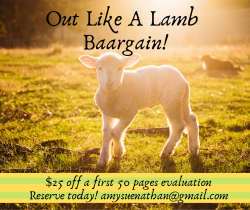
March 15, 2019
Going Green on WFW
My mother did one of those DNA tests and we found out she’s like one smidgen Irish — which makes me a half-smidgen Irish, which is enough to celebrate St. Patrick’s Day, right?
It also reminds me that maybe a long time ago my relatives weren’t all eating matzah ball soup, and that kind of opens the window in my fiction brain.
But I digress. I’m here because my schedule has eased a bit for a bit (I’ve a way with words, no?) and I’ll love to fill it with your words instead of my own!
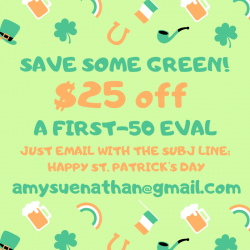
The point of a first-50 page evaluation is to let you know what’s working well and what could be working better. I’ll give you general writing and storytelling tips specific to your story as well as examples using your own work. I’ll nitpick, but not too much. And all this goodness comes in an editorial letter of 3-5 pages and up to 30 minutes of phone time if you want, after you’ve had a chance to digest the feedback, but within 2 weeks so it’s all fresh in my mind.
You might think this leads to a lot of full manuscript work, but it doesn’t. What happens is that writers (y’all are a bunch of smartie pants) use the feedback to inform the rest of their writing or revisions.
I’ve been book coaching and freelance editing for 12 years — that’s longer than I’ve been a published author! (My debut, The Glass Wives hit bookshelves in 2013.)
PLEASE SHARE THE LUCK BY SHARING THIS WITH YOUR WRITER FRIENDS.
Now…
I can’t believe March is half over, can you?
I have a big April planned for WFW, with one writing tip, trick, or bit of advice each day for 30 days! How’s that for lucky? I wanted to round up all the best bits I share with my writers and instead of keeping it all to myself, I’ll share. So watch out for more on that coming soon.
Amy xo
PS First-50 evals are normally $250 so (watch me do math) that’s $225 with the discount. Think about all the corned beef and cabbage, green beer, and Irish potatoes you can buy with the money you save!
PPS I’m also the other kind of green as well. I recycle, stay away from single-use plastics, and eschew straws — except the steel ones I gave my daughter that she left at home!
March 11, 2019
The Story Behind The Story – Part 2
The Last Bathing Beauty is the first novel I’ve written with two timelines. I wrote each timeline separately, and then I wove the storylines together. I was unable to jump from from 1951 to the present to write the book the way it would ultimately be read. I needed to immerse myself in each time period and POV character completely.
I wrote Betty’s 1951 timeline first, and thanks a 1951 Skylark catalog, I had access to dozens of pages of fashionable clothes. Betty wanted to be a fashion writer and editor for a New York magazine so getting this right was important. Add to that, the early 50s clothing varied from the mid-late 50s poodle skirts we all imagine.
I had so much funny perusing this catalog and choosing outfits for Betty and her friends! And thanks to fiction, I was able to mix and match and make alterations without even knowing how to sew!
Take a look at this lovely dress which inspired me! Note the gloves and shoes and posture–I sure did. And while it’s a little blurry you can read the catalogue copy too. I enjoyed all the descriptions, fabrics, and prices on the pages.
Gotta love dresses with feminine wiles galore!
Amy xo
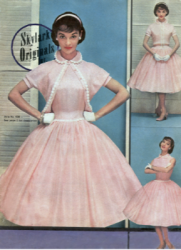
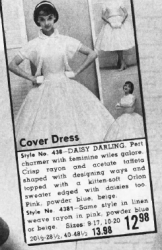
Women's Fiction Writers
- Amy Sue Nathan's profile
- 543 followers



